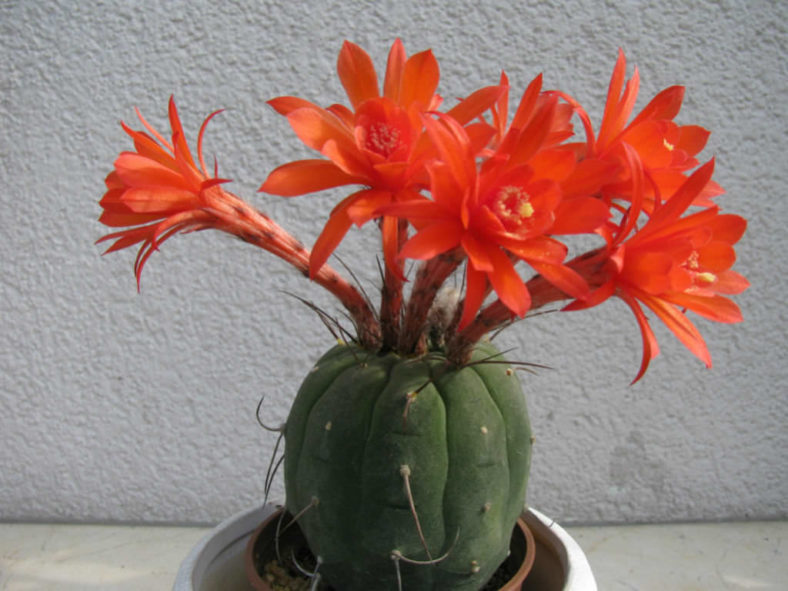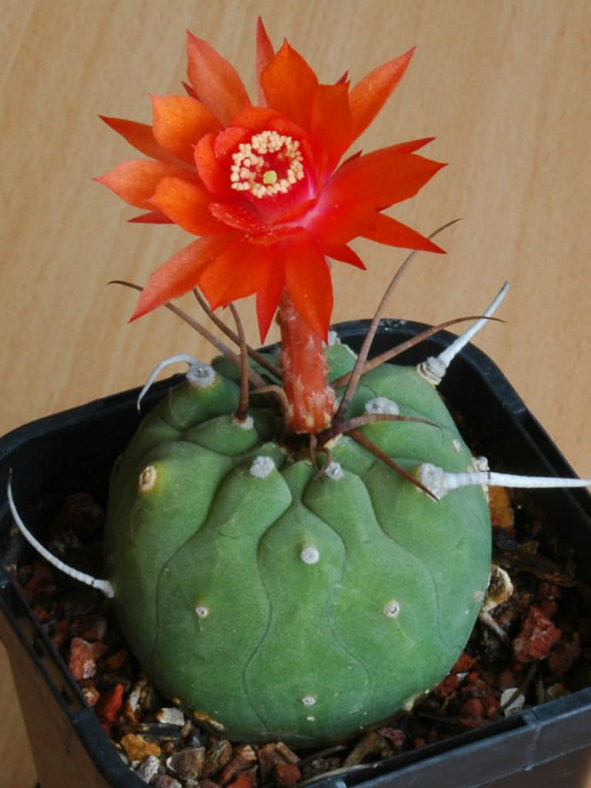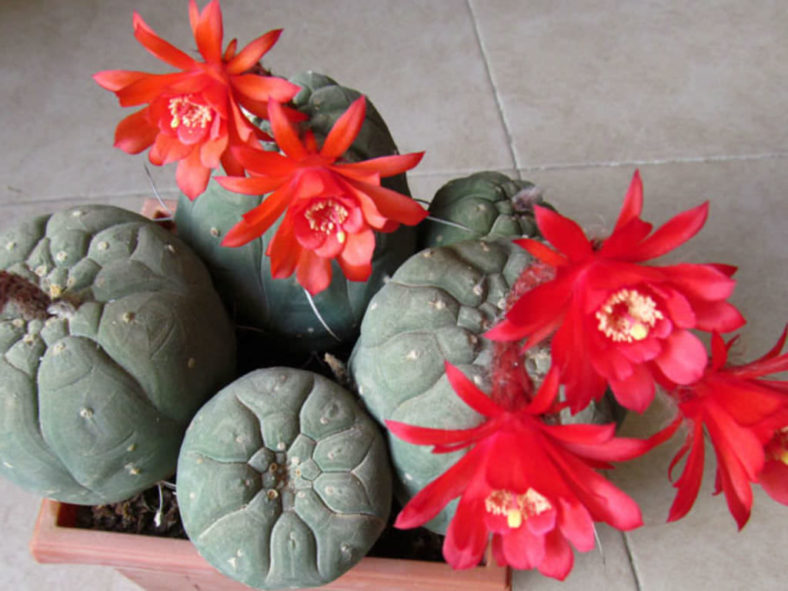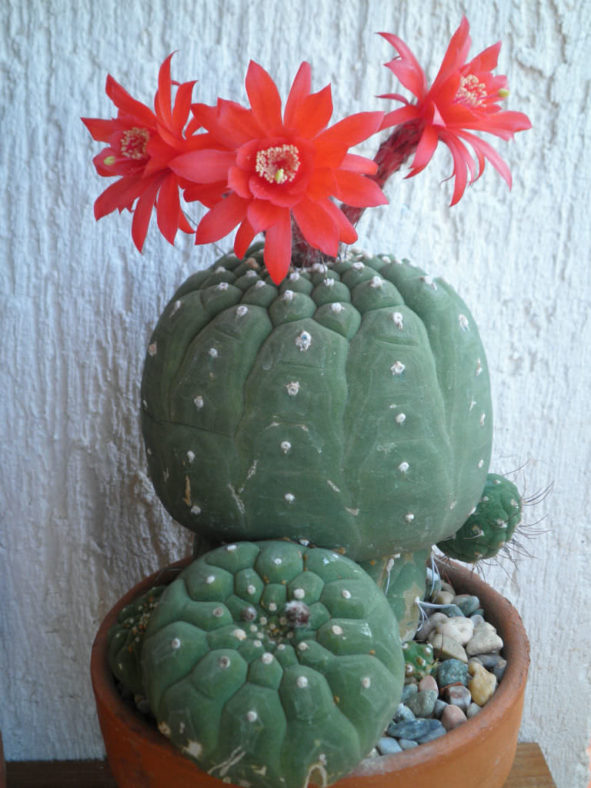Scientific Name
Matucana madisoniorum (Hutchison) G.D. Rowley
Synonym(s)
Anhaloniopsis madisoniorum, Borzicactus madisoniorum, Eomatucana madisoniorum, Loxanthocereus madisonorum, Submatucana madisoniorum
Scientific Classification
Family: Cactaceae
Subfamily: Cactoideae
Tribe: Trichocereeae
Genus: Matucana
Etymology
The specific epithet "madisoniorum" (pronounced "mad-ih-so-nee-OR-um") honors Marshall Pierce Madison (1895-1977), United States attorney, his wife Elena Eyre Madison, and the Madison Fund in San Francisco for their support of the University of California Botanical Garden.
Origin
Matucana madisoniorum is native to Peru. It grows at low altitudes near the edge of the Amazon rainforest.
Description
Matucana madisoniorum is a small cactus with a blue or grey-green, spherical to elongate stem that usually grows solitary, but may clump with age. The stem can grow up to 6 inches (15 cm) tall and 4 inches (10 cm) in diameter. Some specimens have long spines, while others are completely naked. The spineless specimens are often mistaken for Lophophora williamsii.
The attractive, bright orange-red flowers can reach 8 inches (20 cm) in length and 1.4 inches (3.5 cm) in diameter. The buds start as little white or grey furry balls. Matucana madisoniorum blooms more than once in several flushes throughout the summer.

How to Grow and Care for Matucana madisoniorum
Hardiness: USDA hardiness zones 9b to 11b: from 25°F (-3.9°C) to 50°F (10°C).
All species are sensitive to moisture. Therefore, watering should be limited to the growing season and only made when the substrate is completely dry. It must be suspended during the winter. Since they tend to lose their roots in cold and wet conditions, they must be kept warm even in winter. A temperature of at least 50°F (10°C) is suitable. Some species, for natural adaptation, can resist temperatures below 32°F (0°C).
If the plants are in the vegetative stage and under optimal environmental conditions (a low moisture content with a substantial temperature swing between day and night is appreciated), growth is relatively fast. Bloom can be obtained 2 to 3 years after birth.
Matucana must be grown in very porous, well-drained soil. It can be mainly composed of sand, lapilli, and gravel. The substrate's quality is very important to encourage the development of a dense network of spines. The soil must be rich in potassium and poor in nitrogen. Since the roots are very delicate and subject to rot, the soil should be kept as dry as possible. Do not forget that these plants grow in steep and inaccessible places in their natural environment.
Learn more at How to Grow and Care for Matucana.
Links
- Back to genus Matucana
- Succupedia: Browse succulents by Scientific Name, Common Name, Genus, Family, USDA Hardiness Zone, Origin, or cacti by Genus
Photo Gallery
Click on a photo to see a larger version.


